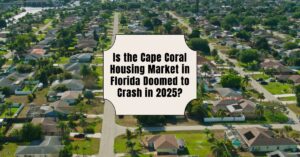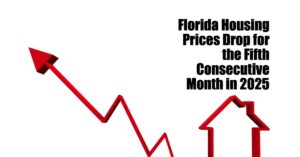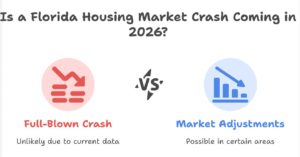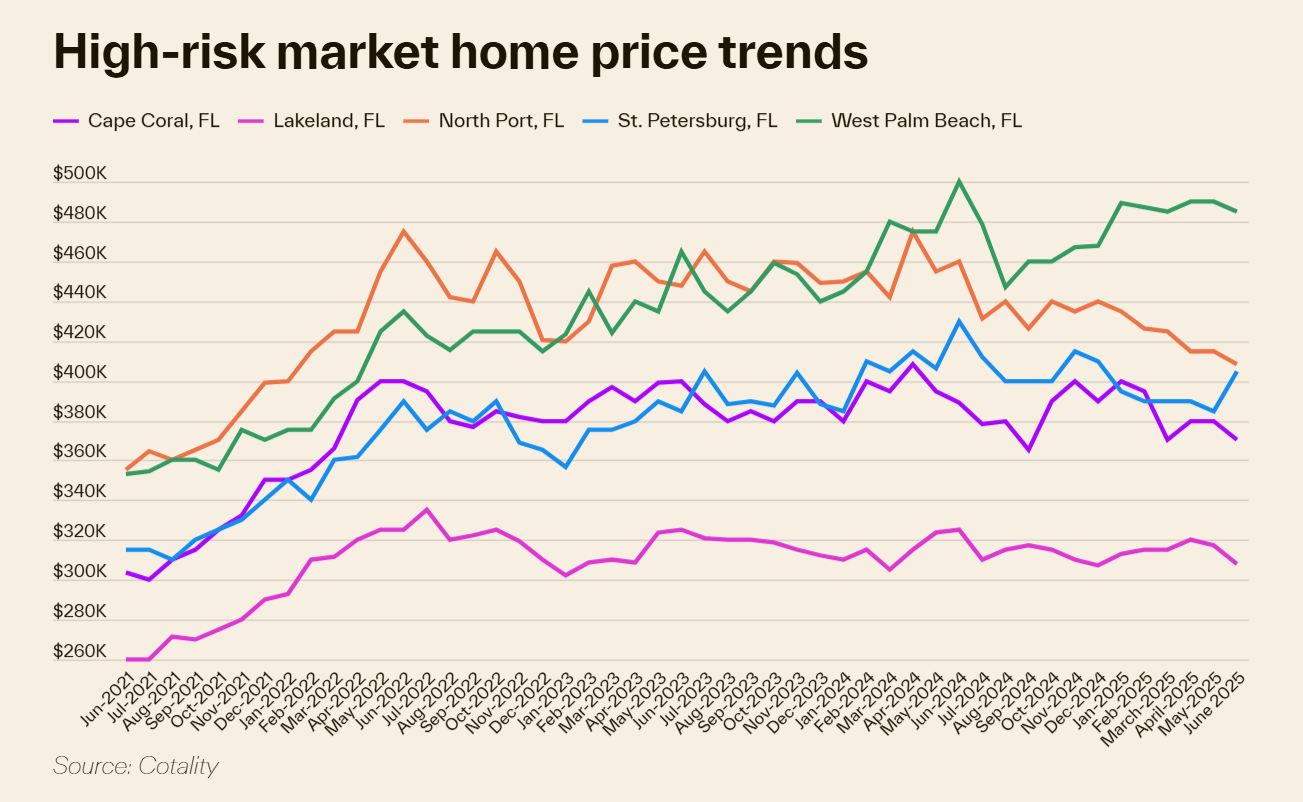Let's talk about a headline that's been making waves in the real estate world, and for good reason: Miami Housing Bubble Alert: Bank Warns, Experts Disagree. It’s the kind of news that can send a shiver down your spine if you're a homeowner, investor, or even just someone dreaming of ditching crowded cities for the Sunshine State. A powerful banking institution, UBS, has put Miami squarely in the spotlight, calling it the city most at risk of a housing bubble globally. But, as is often the case with complex markets, the story is far from black and white. I've dug into what's being said, and honestly, it's a fascinating debate with some really smart people on both sides.
Miami Housing Bubble Alert: Bank Warns, Experts Disagree
The Warning Shot: UBS's Global Bubble Index
So, what exactly is setting off this “bubble alert” for Miami? A prominent annual study by UBS, the Global Real Estate Bubble Index, analyzes property markets in 25 major cities worldwide. Their goal is to identify overheating markets, where prices have detached significantly from fundamental economic indicators.
This year, Miami landed at the very top of their list, earning a bubble risk score of 1.73. This score places it in the highest-risk category, ahead of cities like Tokyo and Zurich. To reach these conclusions, UBS looks at a few key things:
- Price-to-Income Ratio: This compares average home prices to the average earnings of the local population. If prices are way higher than what people earn, it’s a red flag.
- Price-to-Rent Ratio: This looks at how the cost to buy a home stacks up against the cost to rent a similar property. When buying becomes much more expensive relative to renting, affordability erodes.
- Mortgage-to-GDP Ratio Change: This tracks how much borrowing for housing is growing compared to a country's overall economic output.
- Construction-to-GDP Ratio Change: This measures the pace of new construction relative to economic growth.
- City-to-County Price Ratio: This highlights price differences between the core city and its surrounding areas.
The report suggests that Miami has seen the most significant inflation-adjusted home price increases over the past 15 years compared to other cities in the study. They are particularly concerned that Miami's price-to-rent ratio has climbed higher than its previous peak in 2006, which they identify as a major warning sign for a potential bubble.
Cracks in the Analysis? Experts Push Back.
Now, this is where the real estate veterans and academics chime in, and they're not entirely convinced by UBS's pronouncements. It’s one thing to run numbers, and another to understand the unique dynamics of a city like Miami.
Eli Beracha, who heads up the residential real estate program at Florida International University (FIU), believes the UBS report misses the mark. His main argument? The reliance on local income data. “In Miami, we know that a lot of the income that is earned here, probably more than other cities, is not necessarily reported,” Beracha states. “So a lot of people are really making more money than it is reported.”
This is a crucial point. Miami isn't just a local market; it's an international magnet. People are moving there not just for jobs within the city, but for its lifestyle, its tax benefits, and its financial opportunities, often bringing wealth earned elsewhere. As Beracha puts it, “If somebody's bringing wealth from, let's say, Brazil, or any other country or another city, they're not necessarily earning the money here, or they didn't make the wealth here, but they're bringing it here.” This means the price-to-income ratio, as calculated by UBS using solely local income figures, might not accurately reflect the buying power of many individuals in the Miami market.
Ana Bozovic, a Miami-based real estate agent and founder of Analytics Miami, is even more direct. She's called the UBS report “clickbait” and accused the bank of “spreading sensationalist misinformation.” Bozovic feels the report is too focused on price growth and ignores other, more telling, market fundamentals.
What the UBS Report Might Be Overlooking on the Ground
Beyond the income discussion, there are several other powerful factors that experts believe UBS might not have fully factored into their “bubble risk” assessment:
- The Dominance of Cash Buyers: This is perhaps the most significant point of contention. Miami's real estate scene is heavily influenced by all-cash transactions. In the first half of 2025, Miami actually led the nation in all-cash deals, accounting for a staggering 43% of all sales. For the high-end market (homes above $1 million), this figure jumps to over 53% cash. Why is this so important?
- Cash buyers are generally well-capitalized and less reliant on financing. This makes them far more resilient to interest rate hikes and economic downturns.
- A market with a high percentage of cash buyers is inherently less prone to the kind of leverage-driven collapses seen in past bubbles. As Beracha explained, “You do not see crashes in housing when people buy in cash. You see crashes when there is overleveraging, where people borrow too much and then all of a sudden they cannot afford to pay the debt.”
- Strong Demand Drivers: While the UBS report might focus on price appreciation, it overlooks other aspects of sustained demand. The report itself acknowledges Miami's “coastal appeal and favorable tax environment” drawing newcomers, and robust “international demand—particularly from Latin America.” These aren't fleeting trends; they represent a consistent inflow of residents and capital that support property values.
- Low Distressed Inventory: Bozovic also notes that Miami has a low rate of distressed properties. This means fewer forced sales, which can depress prices across the board. Coupled with inventory levels that are still below pre-pandemic norms, this points to a supply-and-demand dynamic that offers some price stability.
A “Balloon” Deflating, Not a Bubble Bursting?
Another perspective comes from Jake Krimmel, a senior economist at Realtor.com. He agrees that Miami's market has cooled considerably from the frenzy of the pandemic years. However, he prefers to describe this as the “air slowly coming out of the balloon” rather than a bubble about to burst.
What does this “slow deflation” look like in Miami?
- Longer Days on Market: Homes are taking longer to sell. In September, the typical Miami home waited 89 days to find a buyer, which is 16 days longer than the previous year.
- Increased Supply: Active inventory has risen by 16.3% compared to September 2024.
- Patient Sellers: Perhaps most telling is the increase in listings being taken off the market. This suggests sellers are not pressed to sell and are willing to hold out for their desired price, indicating a lack of widespread seller distress. Krimmel sees this as evidence that sellers are in a stronger financial position, providing a “backstop for further price declines.”
This slower pace, Beracha argues, is simply a natural reaction to rising interest rates and a return to a more balanced market after an overheated period. “It is normal that people take some time, a breather, trying to figure out the market,” he says.
The Internal Contradictions and My Takeaway
Bozovic points out an interesting internal contradiction within the UBS report itself. While it labels Miami as the highest risk for a “large price correction,” the report's authors also state that “a sharp correction appears unlikely at this stage.” This raises a question: if a sharp correction isn't expected, what exactly is the imminent “bubble risk” they are so concerned about?
From my vantage point, the alarm bells from UBS, while attention-grabbing, seem to overlook some of the fundamental strengths of the Miami real estate market. The city's unique position as a global financial hub, its attractiveness to high-net-worth individuals, and, most importantly, its robust all-cash buyer segment, create a market resilience that a simple price-to-income or price-to-rent ratio might not fully capture.
What we're seeing in Miami feels less like the precarious conditions preceding a bubble burst and more like a maturing market. It’s a market that experienced a rapid expansion, fueled by external factors and strong demand, and is now entering a phase of stabilization. The cooling trend described by experts is a sign of normalization, not necessarily impending doom. While caution is always wise in real estate, the narrative of an imminent Miami housing bubble seems to be missing some key chapters of the city's real estate story.
Invest in Rental Properties That Generate Cash Flow from Day One
Stop waiting for perfect market timing. With cash-flowing rental properties in strong U.S. markets, you can earn steady income and build long-term wealth—without the stress of market speculation.
Work with Norada Real Estate to find stable, cash-flowing markets beyond the bubble zones.
🏘 Build Wealth Where Renters Stay Long-Term 🏘
Talk to a Norada investment counselor today (No Obligation):
(800) 611-3060
Want to Know More?
Explore these related articles for even more insights:
- Miami Named World’s Most At-Risk Housing Market Amid Bubble Concerns
- Miami Housing Market Emerges as the Top Buyer's Market of 2025
- Miami, FL is the Top Housing Market for International Buyers in 2025
- Miami, Florida Housing Market Faces BIG Crash Risk
- Top 10 Housing Markets Attracting Foreign Homebuyers in 2025
- Miami Housing Market: Prices, Trends, Forecast
- Hottest Florida Housing Markets in 2025: Miami and Orlando
- Miami Real Estate Market Predictions 2025-2026: Insights for Buyers
- Will Miami's Housing Market Crash Due to Rising Mortgage Rates
- Miami Housing Market Soars: Prices Jump by Remarkable 10.6%
- When Will the Housing Market Crash Again?













